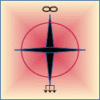The Backbone of Bandwidth: Information Sharing
Introduction: The Rise of Intelligence
Communication is the vital thread that weaves individuals into societies, enabling collaboration, innovation, and the sharing of knowledge. From the chemical signaling of single-celled organisms to the global internet networks of the Digital Age, the evolution of communication reflects humanity’s expanding ability to connect, coordinate, and create. This chapter explores the historical progression of communication across eras, illustrating its pivotal role in shaping civilization.
Single Cell Era: Chemical Beginnings
The earliest forms of life relied on fundamental mechanisms to convey information:
Chemical Signaling: Single-celled organisms exchanged signals through chemicals to coordinate group behavior, such as nutrient sharing or warning of threats. Life’s earliest “chem trails.”
Pheromones: These chemical cues played a key role in attraction and survival strategies, ensuring reproduction and species continuity.
This era marked the origin of communication, where life began responding and adapting to its environment through rudimentary signaling.It is interesting that these hidden signaling methods are still used today to signal fear or sexual state.
Primitive Era: The Emergence of Sound and Gesture
As organisms evolved, so too did their methods of communication:
Gestures: Early humans utilized hand and body movements to express emotions, intentions, and warnings
Sounds: Grunts, cries, and other vocalizations formed the foundation of primitive speech.
Early Language: Over time, patterns of sound evolved into rudimentary systems of verbal communication, fostering cooperation and group survival.
These developments signaled the beginning of human interaction beyond instinct, paving the way for social structures.
Awareness Era: Symbolism and Speech
With increasing cognitive abilities, communication advanced into more complex forms:
Symbolic Communication: Humans began using symbols and visual markers to represent ideas and objects.
Spoken Language: Language matured into structured systems of sounds, enabling the sharing of stories, ideas, and knowledge.
Hieroglyphics: The introduction of pictorial writing systems marked a significant leap in recorded communication.
This era highlighted humanity’s growing intellectual and cultural sophistication.
Medieval Era: Writing Takes Root
The Medieval period saw significant advancements in written communication:
Writing Systems: Organized alphabets and scripts emerged, creating the framework for modern languages.
The Written Word: Written texts allowed for the preservation and dissemination of knowledge across generations.
The ability to document and store information marked a turning point in the durability and reach of communication.
Agricultural Age: Manuscripts and Duplication
As societies became agrarian and more organized, communication tools expanded:
Manuscripts: Handwritten books and documents allowed for the recording of agricultural practices, governance, and cultural traditions
Broadcast / Duplication: Early methods of copying texts enabled the wider distribution of information.
Broadcast / Duplication: Early methods of copying texts enabled the wider distribution of information.
Broadcast / Duplication: Early methods of copying texts enabled the wider distribution of information.
Enlightenment Era: The Printing Revolution
The Enlightenment witnessed a transformative innovation in communication:
Printing Press: Johannes Gutenberg’s invention revolutionized the production of books and documents.
Books: The beginnings of organized public instruction as “Education.”
Mass Printing: The proliferation of printed materials empowered the spread of ideas, science, and education.
These advancements catalyzed cultural and intellectual movements, fostering unprecedented connectivity. With the rise of governmental power broadcast information became a method of propaganda for civil control.
Industrial Age: The Rise of Telecommunications
With industrialization came groundbreaking communication technologies:
Telegraph: The invention of the telegraph allowed near-instantaneous communication across vast distances.
Telecommunications: Early telephones and wired networks laid the foundation for modern communication infrastructure.
Mass Media: The combination of printed and broadcast one way communication led to powerful media influence.
This era marked the transition from manual to mechanical communication, accelerating global interaction.
Digital Age: Global Connectivity
The Digital Age has brought communication into an era of seamless, instantaneous connection:
Satellite Relays: Satellites enable global broadcasting and real-time communication across continents.
Smart Phone: A personal bandwidth terminal with sensors places global connectivity at your fingertips at cost of privacy.
Internet: The internet revolutionized how humans access, share, and store information.
Global Communications: Advanced technologies, including mobile networks and AI-driven systems, have created an interconnected world.
This era represents the pinnacle of communication evolution, where boundaries of time and space have been largely overcome.
